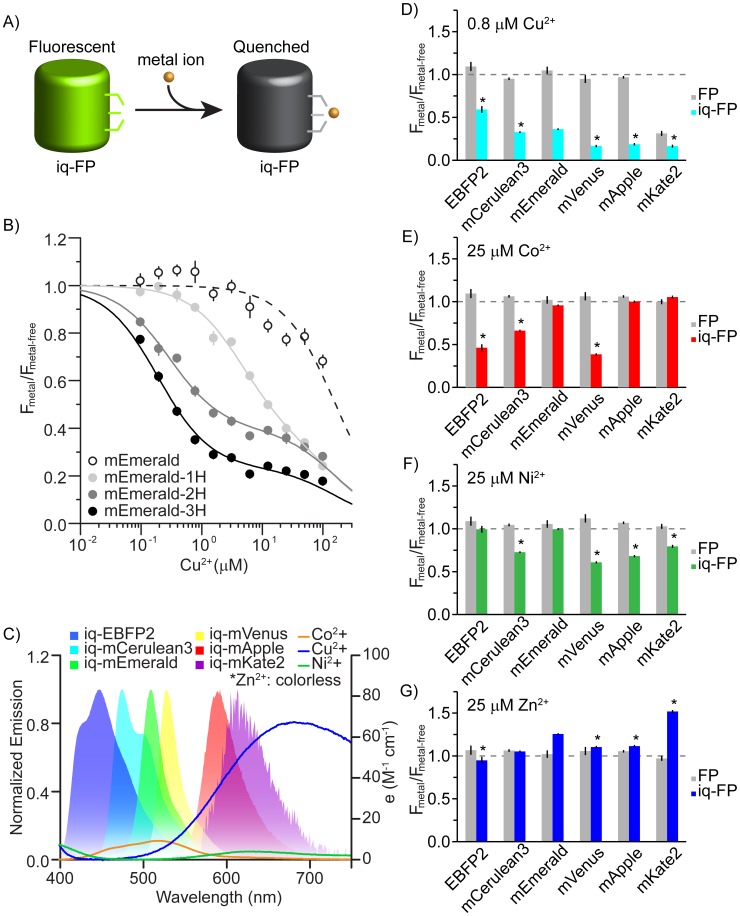Figure 1.
A) Cartoon of experimental design. A metal-binding site is engineered into an FP and fluorescence can be quenched upon the binding of a colored transition metal ion. B) Quenching curves for mEmerald (open circles), mEmerald-1H (H147, light gray), mEmerald-2H (H202 & H204, dark gray), and mEmerald-3H (H147, H202 & H204, black). Spectra are normalized to the fluorescence without metal and the relative fluorescence from each FP is plotted as a function of copper concentration. C) Emission spectra of FPs used in this study and absorbance spectra of three color transition metal ions, Co2+, Cu2+, and Ni2+ (measured with saturating concentrations of EDTA). D) Comparison of fluorescence quenching between FP and iq-FP pairs at 0.8 µM Cu2+, E) 25 µM Co2+, F) 25 µM Ni2+, and G) 25 µM Zn2+. Asterisk indicates a significantly different amount of quenching for an iq-FP compared to iq-mEmerald in the presence of metals (p<0.05). All data are average ± S.D. of three independent measurements.

